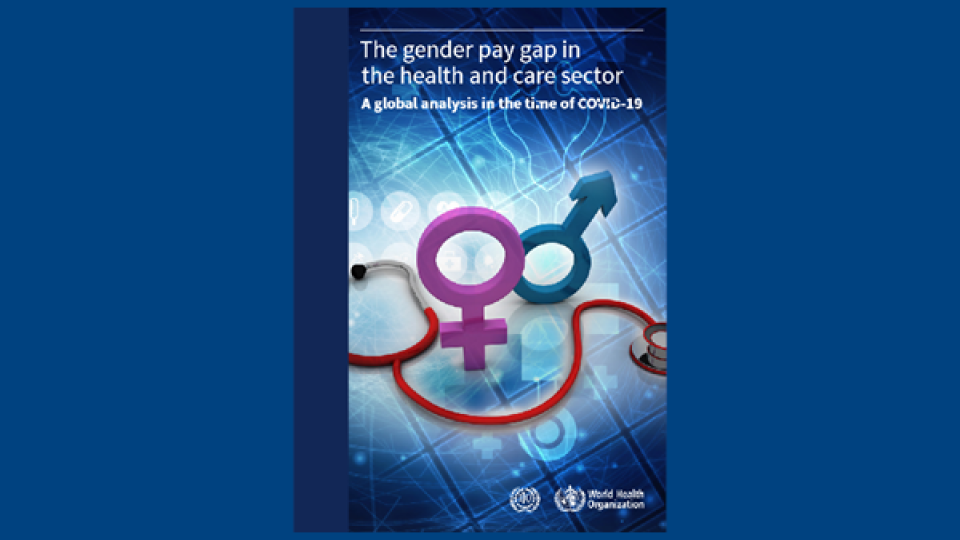New reports reveal nurses are underpaid, undervalued and face larger gender pay gap than other sectors

ICN denounces undervaluing and underfunding of nursing and highlights limitations in ILO definitions of a nurse
The International Council of Nurses (ICN) has highlighted two recently released reports on pay and gender, which show that nurses, who are predominantly female, are underpaid for their services, earning on average 24% less than men. ICN has been calling out the historical, chronic and deep-rooted undervaluing and underfunding of feminized work, with nursing being a prime example. ICN demands equal pay for equal work within nursing and the health sector.
The World Health Organization (WHO) and the International Labour Organization (ILO) yesterday released an analysis of the most comprehensive global evidence on gender pay inequalities in the health and care sector in the time of COVID-19. The report, The gender pay gap in the health and care sector: a global analysis in the time of COVID-19, which uses representative survey data from wage employees from countries in all geographic regions and income groups across the world, found that women in the health and care sector face a larger gender pay gap than in other economic factors, earning on average 24 percent less than their male peers. The findings highlight that women are underpaid for their labour market attributes when compared to men.
Women in Global Health also launched a report on gender and pay on 7 July, Subsidizing Global Health: Women’s Unpaid Work in Health Systems, which revealed that more than six million women worldwide are subsidising health systems with their unpaid or underpaid labour. This includes the predominantly female profession of nursing.
In response to the findings of the two reports, Dr Pamela Cipriano, ICN President said:
“Nursing, a 90% female profession, has been historically underpaid. Caring professions like nursing are often regarded as ‘women’s work’ and therefore are undervalued and underpaid or even unpaid. Fair pay is critical to recruiting and retaining the nursing profession, especially now that working conditions are increasingly difficult due to the COVID-19 pandemic.
‘The lack of flexible working policies and practices is another barrier to career progression for women, a large proportion of whom are seeking family-friendly, flexible work, which also tends to be underpaid.
‘ICN calls for health systems around the world to invest in nursing and evaluate the gendered pay models toward the nursing profession as a historically female profession. Women and other gender minorities need equal pay for equal work within nursing and the health sector.“
The WHO/ILO report also looks at the factors that are driving the sector’s gender pay gaps. Differences in age, education, working time and the difference in the participation of men and women in the public or private sectors only address part of the problem. The reasons why women are less paid than men with similar labour market profiles in the health and care sector across the world remains, to a large extent, unexplained by labour market factors, the report says.
ICN CEO Howard Catton raised ICN’s concern that the ILO definitions of nursing do not reflect the realities of nursing practice and the differences between nursing roles.
“In this recent report, only Advanced Practice Nurses are classified as professional nurses; all other nurses are classified as technical workers. This is a classic example of the undervaluing of the overwhelmingly female nursing profession, and has resulted in countries reporting data about the composition of their nursing workforce which our members believe misrepresent, often significantly, the actual number of nurses practising in different roles. ICN has raised this issue with the ILO as it has serious consequences for national policy making and workforce planning.
‘We strongly believe it is important to review the definitions and provide further guidance to countries to ensure that the nursing workforce recruitment, retention and future planning is based on a more precise understanding of the size and composition of the nursing workforce.”
ICN has recently reported on the alarming rise in the number of nurses taking strike action across the world in direct response to governments’ failure to tackle the root causes of our fragile, severely weakened, and in some cases collapsing healthcare systems. The ICN/CGFNS’s International Centre for Nurse Migration report, Sustain and Retain in 2022 and Beyond, emphasized how nurses are exiting the profession in great numbers since the COVID-19 pandemic put increased stress on the nursing workforce. If only an additional 4% of global nursing workforce exits due to the pandemic, this could cause over one million nurses to leave the profession. This combined with a pre-pandemic shortage of six million nurses, and an ageing nursing population, means the global nursing shortage could be as high as 13 million. ICN has called workforce shortages “the current greatest threat to global health”.
Announcing the release of the report, WHO stated “Closing the gender pay gap and ensuring gender parity in the world of work is fundamental for economies and societies to thrive. Ensuring the full and equal inclusion of women and girls in all spheres of society and across the world should be a key pillar in all economic recovery plans following the economic and social disruptions caused by the COVID-19 pandemic.”
ICN recommends reading the ICN reports: Ageing Well? Policies to Support Older Nurses at Work, The Global Nursing Shortage and Nurse Retention, Mass Trauma experienced by the Global Nursing Workforce as well as Sustain and Retain in 2022 and Beyond.
Download the press release here